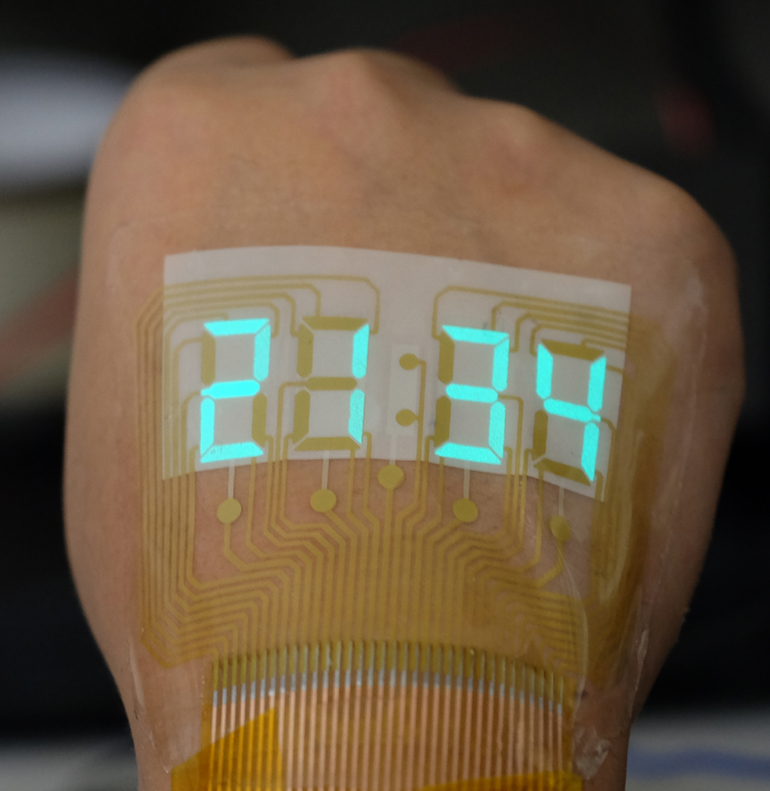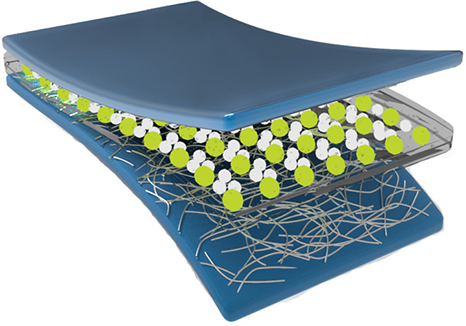China Breakthrough! : Epidermal Display Screens For On Your Skin Flexible Medical Devices And Soon To be Powered By The Human Body!
Source: Thailand Medical News Nov 04, 2019 6 years, 1 month, 2 weeks, 3 days, 15 hours, 2 minutes ago
Chinese researchers from Nanjing University in China have developed a way to place displays on human skin that are flexible, safe, and don’t require a lot of power to run. They are even working out a way to power the devices using energy produced form the human body! The technology will certainly have implications for the field of
wearable devices by allowing already existing flexible medical devices to display relevant biomedical information.

The initial stretchable light-emitting devices called
alternating-current electroluminescent (
ACEL) displays that can be stuck on skin or other surfaces like a temporary tattoo. However, the displays require relatively high voltages to achieve sufficient brightness, which could create safety concerns. They also drain a lot of power.
However, researchers lead by Desheng Kong and his colleagues wanted to develop an
ACEL that could operate at lower voltages and thus be safer for human skin. They came up with a stretchable High-Permittivity Nanocomposites for Epidermal Alternating-Current Electroluminescent Displays.
The new device is made of silver nanowire electrodes encasing a layer of a stretchable dielectric material with light-emitting microparticles seeded throughout. The dielectric is made of a stretchy polymer with ceramic nanoparticles. These nanoparticles work with the light-emitting ones to boost their brightness, allowing for the screen to be seen with indoor lighting turned on.
During a demo for
Thailand Medical News, a volunteer had a screen stuck to his skin that displayed the time. It looks like the technology can be easily shrunk down for much higher resolution displays that can provide live data from on-body
medical devices, healthcare trackers, and that can even be used in hospitals to display readings directly on patients.
In only the near future, one can Imagine a runner who doesn’t need to carry a stopwatch or cell phone to check her time: She could just gaze at the glowing stopwatch display on the back of her hand. Such human-machine interfaces are no longer science fiction, but they still have a way to go before becoming mainstream.
The Chinese scientists have developed to make their device sandwiched in an electroluminescent layer, made of light-emitting microparticles dispersed in a stretchable dielectric material, between two flexible silver nanowire electrodes. The device contained a new type of dielectric material, in the form of ceramic nanoparticles embedded in a rubbery polymer, that increased the brightness compared with existing
ACEL displays. They used this material to make a four-digit stopwatch display, which they mounted onto a volunteer’s hand. At low voltages, the stretchable display was sufficiently bright to be seen under indoor lighting. The bright stretchable display could find a broad range of applications in smart wearables, soft robotics and human-machine interfaces, t
he researchers say.
 The Epidermal Screen
The Epidermal Screen
The researchers are working a huge team of
biomedical engineers to not only create an array of biomedical devices but also find a solution to harness energy from cellular processes of the body to power the device!
The authors acknowledge funding from National Key Research and Development Program of China, National Natural Science Foundation of China and Fundamental Research Funds for the Central Universities.
Reference: Stretchable High-Permittivity Nanocomposites for Epidermal Alternating-Current Electroluminescent Displays ,Yunlei Zhou, Chaoshan Zhao ,Jiachen Wang, Yanzhen Li, Chenxin Li, Hangyu Zhu, Shuxuan Feng, Shitai Cao, Desheng Kong* ACS Materials Lett. 2019, 1, 5, 511-518,Publication Date:October 4, 2019 https://doi.org/10.1021/acsmaterialslett.9b00376

